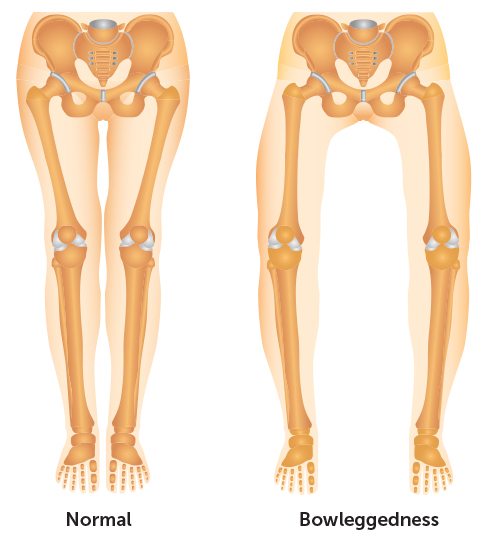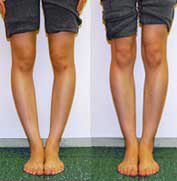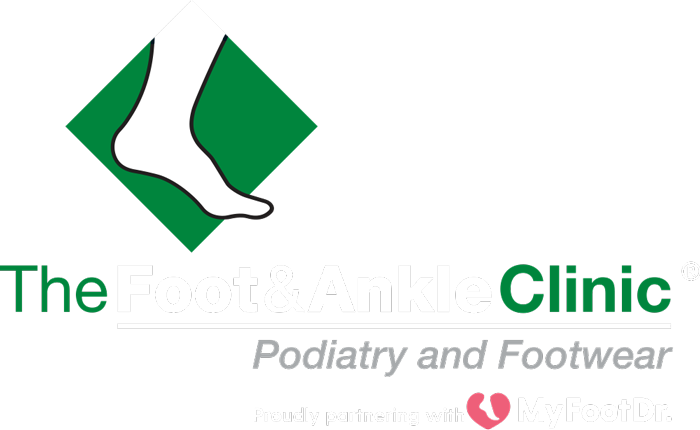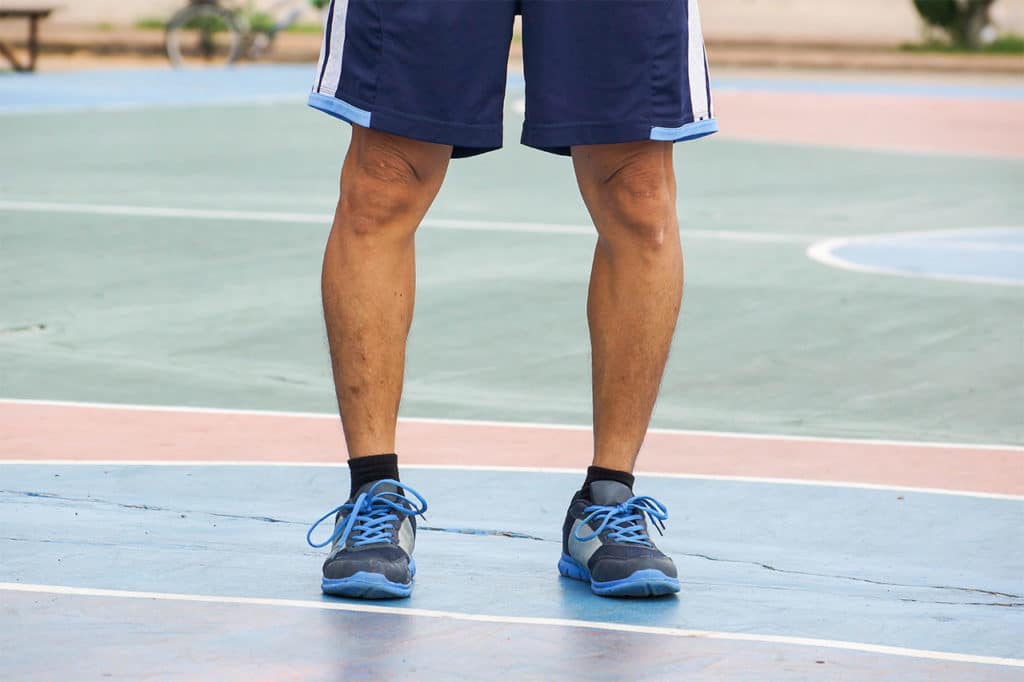Bowlegs – Genu Varum
What are Bow Legs?
Bowlegs is a condition in which your legs appear bowed-out, meaning your knees stay wide apart even when your ankles are together. Bowlegs can sometimes be a sign of an underlying disease, such as Blount’s disease or rickets, and in the long term can lead to arthritis in the knees and hips. Treatment options include braces, casts, or surgery to correct these bone abnormalities.
This condition is fairly common in infants because of their cramped position in the womb. Typically, no treatment is necessary for infants. A child’s legs will begin to straighten when they start to walk, usually between 12-18 months, and in most cases there are no lasting side effects. You should contact a doctor if your child has bowlegs beyond the age of 2.
Bowleggedness is also known as congenital Genu Varum.
Bowlegs can also be a result of:
- Blount’s Disease
- Rickets – a condition resulting from prolonged vitamin D deficiency. This softens and weakens the bones, causing your legs to bow.
- Paget’s Disease
- Dwarfism
- Bone fractures that have not healed properly
- Abnormally-developed bones, or bone dysplasia
- Lead poisoning
- Fluoride poisoning

Treatment of Bowlegs
Treatment is usually not recommended for infants and toddlers unless an underlying condition has been identified. It may be recommended if your case of bowlegs is extreme or getting worse, or if an accompanying condition is diagnosed.
Options for treatment include:
- Special shoes
- Braces
- Casts
- Surgery to correct bone abnormalities
- Treatment of diseases or conditions that cause bowlegs
There is no known prevention for bowlegs. In some cases, you may be able to prevent certain conditions that cause bowlegs, for example, you can prevent rickets by making sure your child receives sufficient vitamin D, both in their diet and from exposure to sunshine. Be sure to talk to your pediatrician if your child still has bowlegs after the age of two.
Early diagnosis and detection of bowlegs will help you and your child manage this condition.

While arthritis is the primary long term effect of bowleggedness, it can be extremely disabling. When it is severe, it effect the knees, the feet, ankles and the hip joints because of the abnormal stresses applied. These people are typically obese which compounds the problem. If one is forced to do total knee replacement at a young age, then it is anticipated that a revision would have to be done when the patient is older. Doing a total knee arthroplasty in these people may be difficult because of the surgeries they have already undergone and because of the abnormal alignment of the bones.
See the Foot and Ankle Clinic about bowlegs
Podiatrists at The Foot and Ankle Clinic have vast experience in diagnosing and treating Bow Legs (Genu Varum) and typically this treatment is very successful but involves a multifactorial approach.
At the Foot and Ankle Clinic our highly qualified team of Podiatrists are all members of the Australian Podiatry Association and offer a combined 50 years’ experience. They are trained to diagnose and effectively treat bowlegs via a range of treatments.
Put your feet in our hands! See us today in Chadstone, East Bentleigh, Moe, Sale, Traralgon, Warragul & Online Store and Retail Enquiries. NO REFERRAL NEEDED!.


